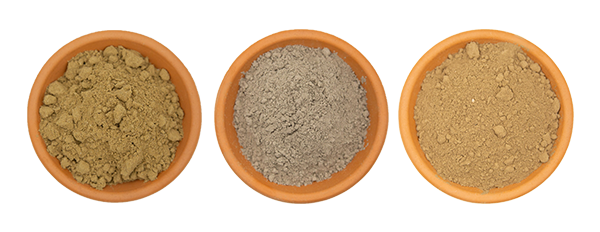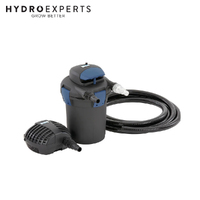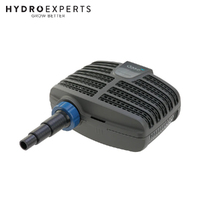What Is Pond Filtration and Why It’s Essential for Ponds?
By Hydro Experts | 9 October 2025
A backyard pond adds life to your garden. It provides a home for fish and plants. A healthy pond requires a balanced ecosystem. Water quality is the foundation of this ecosystem. Without clean water, problems arise.
Algae can take over. Fish can get sick. Your pond can become a source of frustration. Filtration is the most effective tool to maintain water quality. It keeps your pond clean, clear, and healthy. A good filtration system works continuously. It removes waste and impurities from the water. This process is vital for the long-term success of any pond. It ensures your aquatic environment thrives.
Why Filtration Matters?
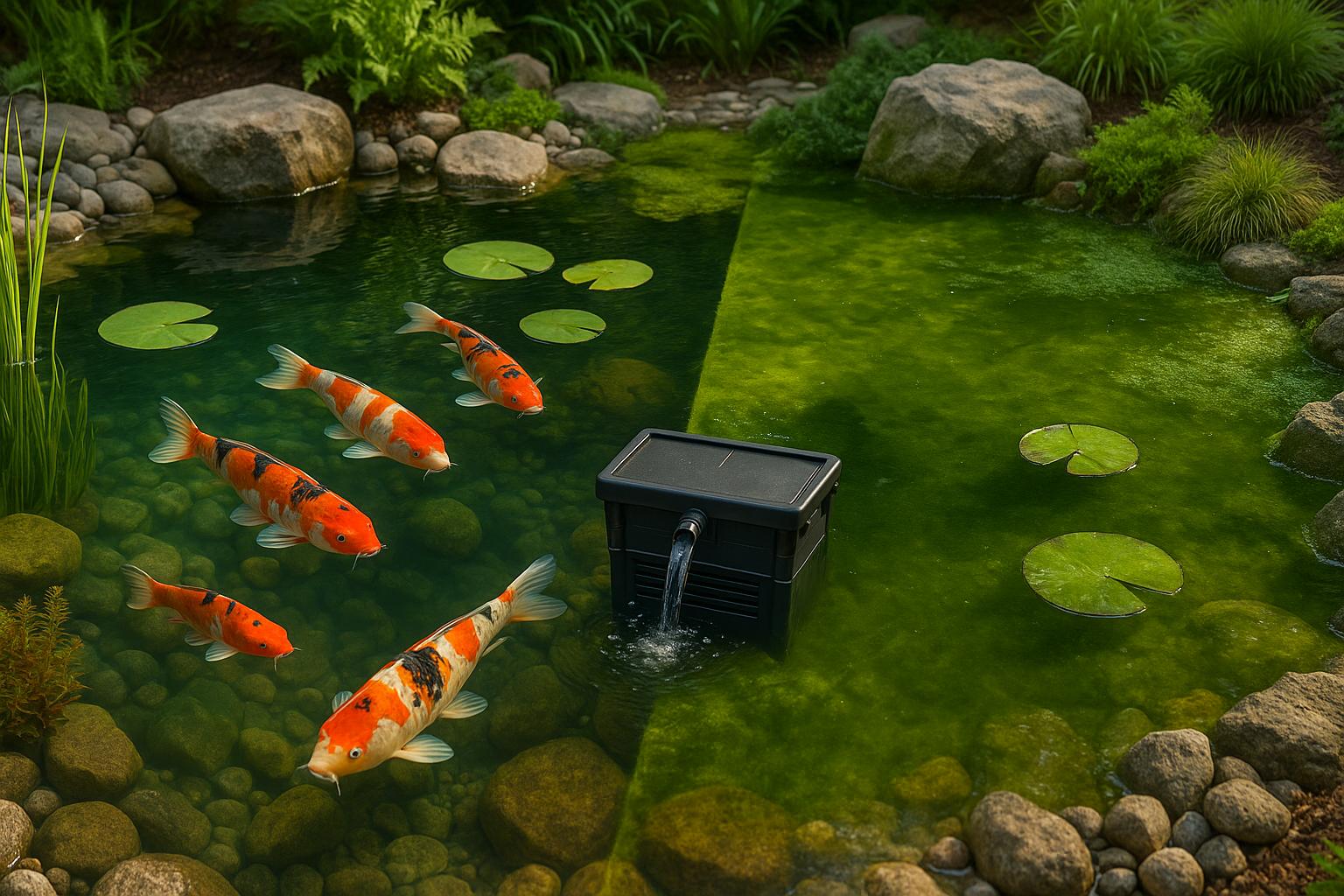
Clear Water
Clear water is a primary goal for many pond owners. You want to see your fish and enjoy the beauty of your aquatic plants. Pond water becomes murky for several reasons. Fish waste, uneaten food, and decaying plant matter accumulate. Dust and pollen blow into the water. These materials break down and release nutrients.
Algae feed on these nutrients, leading to green water. A filtration system physically removes solid debris. This prevents the buildup of particles that cloud the water. The result is improved water clarity. You can enjoy an unobstructed view of your pond's inhabitants.
Fish Health
Fish health depends directly on water quality. Fish produce ammonia as a waste product. Ammonia is toxic to fish, even at low levels. In an unfiltered pond, ammonia levels can rise quickly. This causes stress, gill damage, and disease. A biological filter provides a home for beneficial bacteria. These bacteria perform a critical function.
They convert harmful ammonia into less toxic substances. First, they turn ammonia into nitrite. Nitrite is also harmful to fish. Then, a different type of bacteria converts nitrite into nitrate. Nitrate is a plant fertiliser and is much less harmful to fish. This natural process is called the nitrogen cycle. A filter ensures the nitrogen cycle functions properly. It protects your fish from toxic waste buildup.
Algae Control
Algae growth is a common pond problem. Green water is caused by millions of tiny, single-celled algae suspended in the water.
String algae, another common type, forms long filaments that can cover rocks and plants. Algae blooms occur when there are excess nutrients in the water. These nutrients come from fish waste and decaying organic matter. Filtration helps control algae in two ways. Mechanical filtration removes the solid waste before it can decay and release nutrients.
Biological filtration processes the dissolved waste, like ammonia, robbing algae of its food source. Some filters also include an ultraviolet clarifier. UV clarifiers expose the water to ultraviolet light. This light destroys the single-celled algae that causes green water. It makes the algae clump together. The clumps are then big enough for the mechanical filter to remove.
Ecosystem Balance
A balanced pond is a miniature ecosystem. Every element works together. Plants provide oxygen. Fish add life and movement. Bacteria break down waste. A filtration system is the heart of this ecosystem. It circulates the water, preventing stagnant areas where harmful bacteria can grow. Circulation adds oxygen to the water.
Fish and beneficial bacteria need oxygen to survive. By removing waste and adding oxygen, a filter creates a stable and healthy environment. This stability reduces the need for frequent water changes and chemical treatments. Your pond becomes a self-sustaining feature, not a constant chore.
What is Pond Filtration?
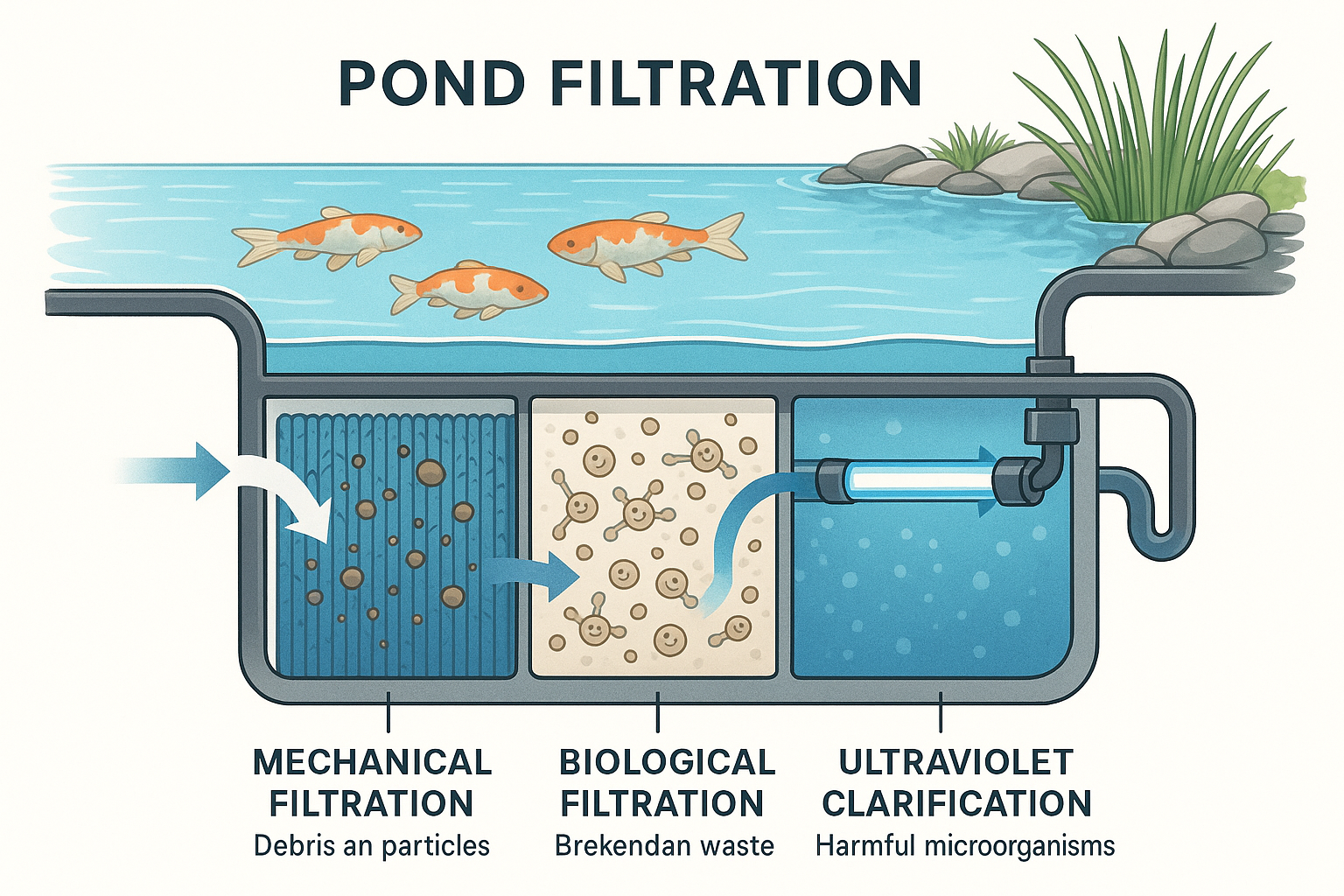
Pond filtration involves three main processes. These are mechanical, biological, and ultraviolet clarification. Most quality filters use at least two of these methods. Together, they keep the water clean and safe for your fish. Understanding each process helps you choose the right system for your needs.
Mechanical Filtration
This type of filtration is the first stage. Its job is to remove solid debris from the water. This includes leaves, fish waste, uneaten food, and clumps of algae. Water is pumped from the pond and passes through filter media. The media acts like a screen, trapping the solid particles. Common filter media for mechanical filtration include sponges, pads, or brushes. These materials have different densities.
Coarse media traps large debris. Fine media traps smaller particles. Regular cleaning of the mechanical filter media is important. If it becomes clogged, water flow is reduced. Trapped debris will also start to decay. This decay releases the same nutrients you are trying to remove. Mechanical filtration improves water clarity. It also prepares the water for the next stage of filtration.
Biological Filtration
Biological filtration is the unsung hero of your pond filter. After the water passes through the mechanical filter, it flows into the biological chamber. This chamber contains specialised media. Bio-balls, ceramic rings, or plastic shapes are common examples. This media provides a large surface area. A massive colony of beneficial bacteria grows on this surface area. These are the bacteria that drive the nitrogen cycle.
They consume the dissolved toxins that the mechanical filter cannot remove. As mentioned before, they convert toxic ammonia and nitrites into less harmful nitrates. This process is essential for fish health.
A biological filter needs time to establish its bacterial colony. This can take several weeks. During this time, you should not add too many fish to the pond. The bacteria also need a constant flow of oxygenated water to live. This is why you must run your pond pump 24 hours a day.
Ultraviolet Clarification
Ultraviolet clarification is a special type of filtration. It is not mechanical or biological. It uses UV light to target microscopic organisms in the water. Its primary purpose is to combat green water. Green water is caused by free-floating single-celled algae. These algae are too small to be caught by a mechanical filter.
A UV clarifier consists of a tube with an ultraviolet bulb inside. Water from the pond is pumped through this tube. The UV light damages the DNA of the algae cells. This kills them and causes them to clump together. These larger clumps can then be easily removed by the mechanical filter.
A UV clarifier can clear up green water in a matter of days. It is a very effective solution for this specific problem. It does not remove string algae or other types of debris. It works best when used with a good mechanical and biological filter.
How to Filter Your Pond?
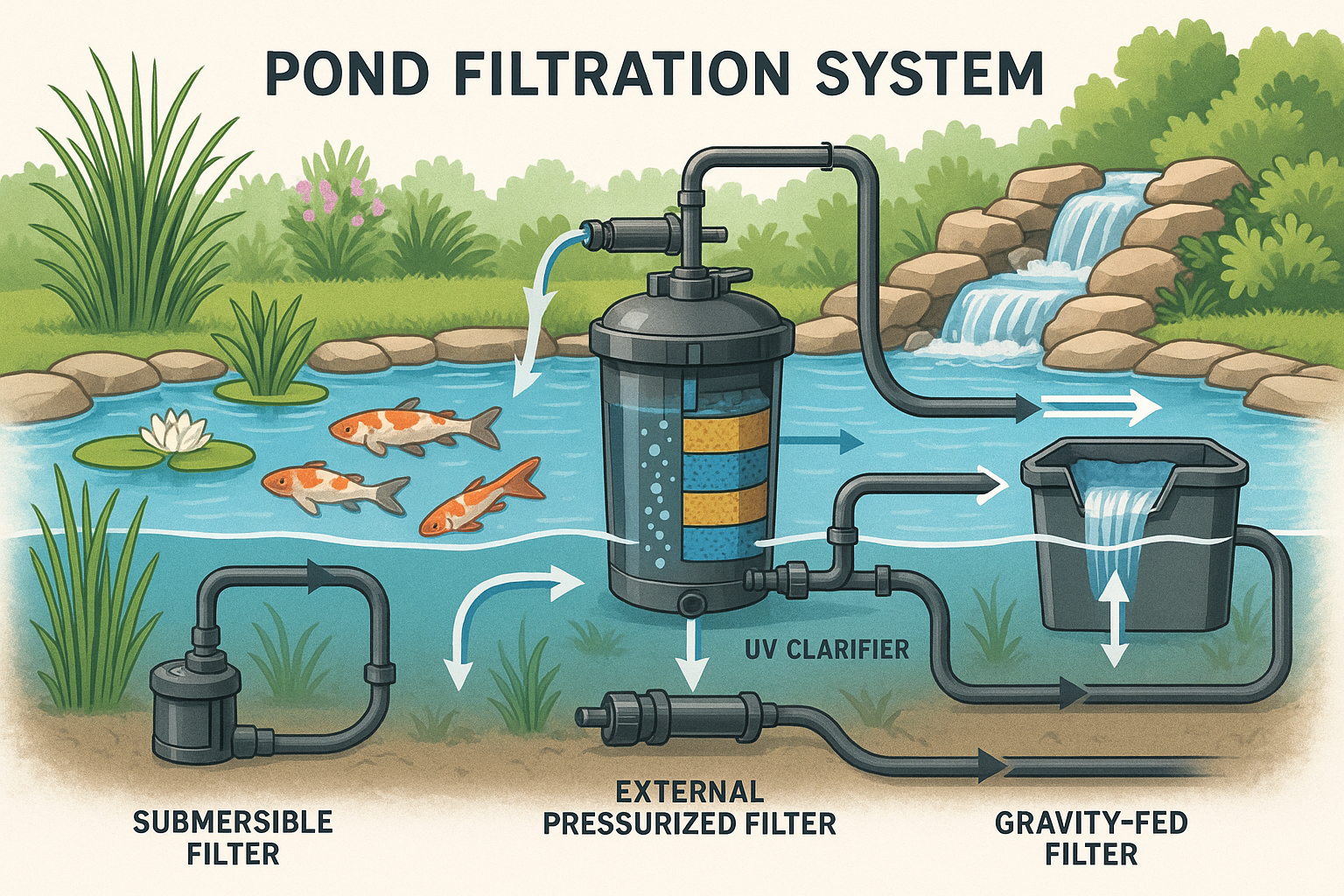
Choosing the right filter is the most important step. The filter must be correctly sized for your pond. An undersized filter will not be able to keep the water clean. A filter's capacity is based on the volume of water in your pond. You need to calculate your pond's volume first. For a rectangular pond, multiply the length by the width by the average depth.
For an irregular shape, you can estimate the volume. It is always better to choose a filter that is rated for a larger pond volume than you have. You cannot over-filter a pond.
Factors to Consider
The number of fish you have also affects your filter choice. Fish produce waste. More fish means more waste for the filter to handle. A pond with many koi, for example, needs a much more powerful filter than a pond with a few small goldfish. Koi are large and produce a lot of waste.
When selecting a filter, check the manufacturer's recommendations for fish load. If you plan to add more fish in the future, choose a filter that can handle the increased load. Sunlight is another factor. A pond in full sun is more likely to have algae problems. You may need a filter with a more powerful UV clarifier in a sunny location.
Types of Pond Filters
There are several types of pond filters available. Submersible filters are placed directly in the pond. They are compact and easy to install. They are best suited for small ponds with few fish. External filters sit outside the pond. They are larger and more powerful. They can handle larger ponds and heavier fish loads. Pressurised external filters are sealed units. Water is pumped through them under pressure.
This allows the filtered water to be pumped uphill to a waterfall. Gravity-fed filters are another external type. Water is pumped into the filter and returns to the pond by gravity. These are often used for large koi ponds.
Pump Selection
A pump is required to move water from the pond to the filter. The pump's flow rate is an important consideration. The flow rate should be matched to your filter's capacity. A general guideline is to circulate the entire volume of your pond water through the filter at least once every two hours. For example, if you have a 4000-litre pond, you need a pump with a flow rate of at least 2000 litres per hour. Check the specifications of both your pump and filter to ensure they are compatible.
Maintenance
Filter media is the material inside the filter that does the cleaning. Mechanical media, like sponges, need to be cleaned regularly. Use water from the pond to clean it. Tap water contains chlorine, which can kill the beneficial bacteria in your filter. Biological media should not be cleaned too often.
A gentle rinse with pond water once or twice a year is enough. You want to preserve the colony of beneficial bacteria. Over time, filter sponges will wear out and need to be replaced. UV bulbs also have a limited lifespan.
They typically need to be replaced every 12 to 18 months to remain effective. Proper maintenance ensures your filter continues to work efficiently. A well-maintained filtration system will provide you with a clear and healthy pond for years.
Conclusion
A clear, healthy pond is achievable. It starts with effective filtration. Understanding why you need a filter and how it works helps you make the most viable choices for your pond. A proper system removes waste, protects your fish, and controls algae. It is the foundation of a stable pond ecosystem.
At Hydro Experts, we offer a wide range of pond filters, pumps, and accessories. Our team can help you select the right equipment for your pond's specific needs. Head over to our website now and get access to the best tools the industry offers.
FAQs
Yes. Any pond with fish requires filtration to remove toxic waste and keep the inhabitants healthy. Even a small wildlife or plant pond benefits from a filter to circulate water and prevent stagnation and sludge buildup.
Yes. Your filter should run 24 hours a day, 7 days a week. The beneficial bacteria that perform biological filtration need a constant supply of oxygenated water to survive. Turning the filter off will kill these bacteria and stop the nitrogen cycle.
No. A filter with a UV clarifier is effective against single-celled algae that cause green water. While a filter helps reduce the nutrients that feed string algae, it cannot remove string algae already growing on rocks or liners. Manual removal and proper shading help control it further.
No. You cannot over-filter your pond water. Using a filter rated for a larger volume than your actual pond improves water quality and provides a cleaner, healthier environment for your fish and plants.
Yes. If the flow rate is too high, water may pass through the filter too quickly for effective cleaning. Always match your filter size and pump flow rate to your pond volume for optimal performance.

